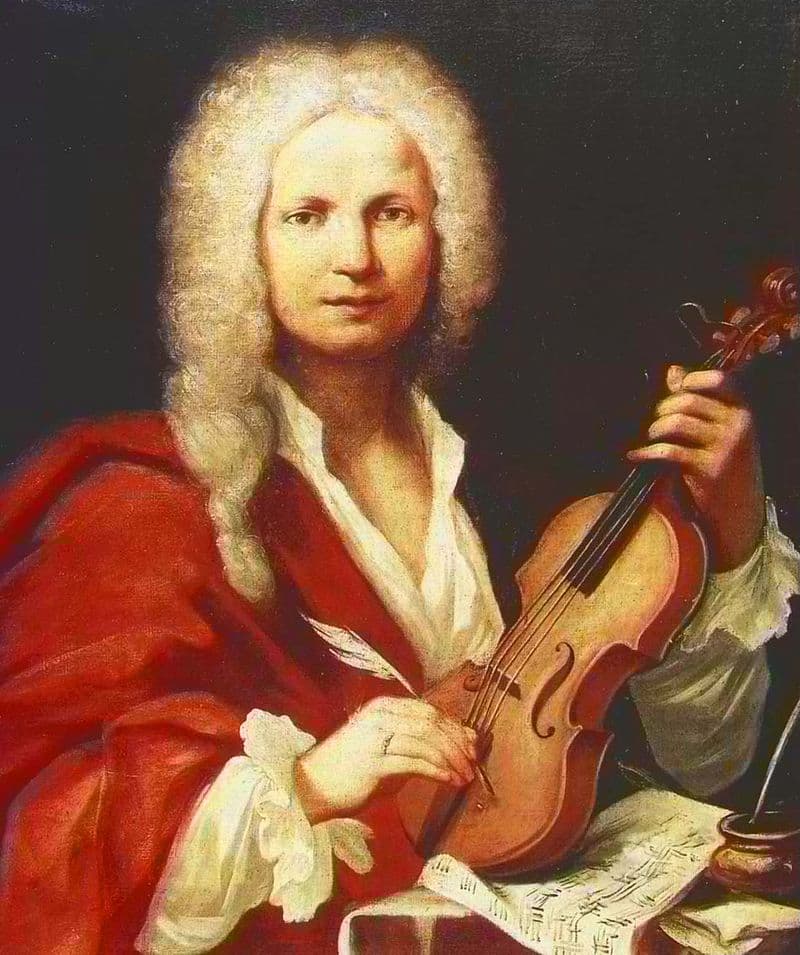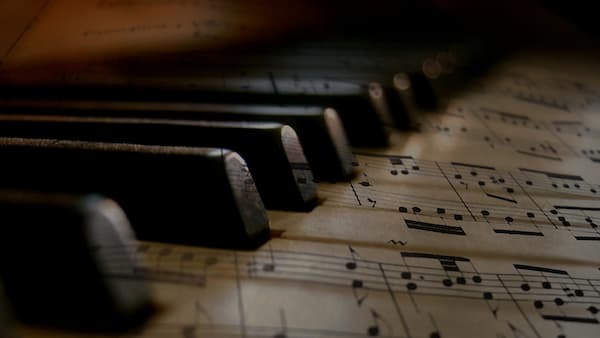The days are getting shorter, and Christmas and New Year ads are everywhere. We’re clearly coming up in winter.
That made me wonder: what’s the best recording of Vivaldi’s Winter from his Four Seasons?

Antonio Vivaldi, 1723
Today, I went to find some of the most popular video performances of Winter currently on YouTube. Ideally, I’ll find a benchmark recording that I can bring out every winter and enjoy.
Here are some of the noteworthy popular performances I found and what I liked and didn’t like about each of them. Find out if your favorite made the list:
Cynthia Miller Freivogel, violin
Voices of Music
This is the most-viewed video of Vivaldi’s Winter on YouTube, with an astonishing view count of 59 million (as of late 2023).
Is it worth the hype? I’d say yes. The soloist is Cynthia Miller Freivogel, and she is playing on a Baroque instrument setup.
Among other things, that means that the wood of her bow is curved in a convex rather than a concave way, which changes the tension of the horsehair and helps to naturally emphasize downbeats in a way that a modern bow doesn’t.
She also adds lovely improvisations in the center’s slow movement.
She is joined by the Voices of Music chamber ensemble. It’s a joy to hear the clarity of textures in this smallish group. You can really hear the rhythmic drive in the bass line in the slow movement, as well as the icy pizzicatos in the background violins.
That said, this performance lacks…something. A wow factor? It’s missing the indescribable magic that makes hairs stand up on the back of my arms.
But that’s a completely subjective response, and I couldn’t even describe what more I’d want if I tried. This is a great performance, and I’m so happy it has gotten so many views.
My personal rating: 7.5/10
Julia Fischer, violin
Bavarian Radio Symphony Chamber Orchestra
From the first notes the orchestra plays, this performance is bursting with tonal color.
Julia Fischer is a soloist with a more distinct sound than Freivogel. She is playing with a modernized violin and bow, and she employs modern technique that is informed by historical performance practice, rather than dictated by it.
Listen to her phrases in the slow movement: they are long and sustained in a way that is well-nigh impossible to pull off with more “authentically Baroque” equipment.
It’s pretty astonishing how much sound this orchestra puts out, given that there are only a dozen or so players onstage. Like the first performance, this orchestra also emphasizes the bass voice in the slow movement to great effect.
The opening to the third movement is strikingly spooky (5:55 in the video above). And the finale feels like a thrilling high-speed chase.
All in all, the strength of this interpretation is Fischer’s beautiful sound and long phrases. Personally, I’m a fan, but your mileage may vary.
As a side note, Julia Fischer showed up in the last article I wrote like this, in which I tried to find my favorite recording of the Grieg piano concerto. Yes, you read that correctly: she’s a piano virtuoso, too.
My personal rating: 8/10
Chloe Chua, violin
Salzburg Chamber Soloists
Like Julia Fischer, Chloe Chua is a musician who seems almost unfairly talented. This performance was given in competition when Chua was just twelve years old.
You would never guess her age if you just listened to her. Her ease and comfort onstage are incredible; it’s like she has been doing this for several lifetimes.
One gets the impression you’re watching a professional soloist work with colleagues, not accompanists in a competition setting. She is clearly very aware of what is happening in the orchestral part, which suggests a deep familiarity with the full score: a must for any successful top-tier artist.
There are times when I feel like the orchestra might be on the edge of overpowering Chua, but I can’t quite decide if that’s the ensemble’s doing, or the balance on the recording.
All things considered, this is an extraordinary performance that I enjoyed just as much as Fischer’s. She’s a marvel.
By the way, we wrote an article describing why Chloe Chua is so extraordinary back in 2021!
My personal rating: 8/10
Øystein Baadsvik, tuba
Uncredited orchestra
My thought process after finding this video was something along the lines of…
A…what playing Winter? A tuba?
Is that…possible? Will it…kill you? Death by Vivaldi-induced asphyxiation?
Well, I had to experience it, and so do you.
Turns out that yes, it is possible to play Winter on the tuba, and not only that, it’s possible to play Winter on the tuba at a brisk pace.
Yes, if you’re used to hearing the violin version, it’s bewildering. Some of the low notes sound like a whoopie cushion, and there are moments where it’s a bit hard to take this seriously.
But I can’t help admiring the virtuosity and lung power it must take to pull this performance off. It doesn’t even sound like a tuba anymore; it sounds more like a horn. The slow movement is downright noble.
Will I listen to this again? I doubt it. But it sure was ear-opening to hear. I’m in awe of Baadsvik’s playing. And it’s a great reminder that, when you’re learning a piece of instrument, check out transcriptions. You might hear things in the new arrangement that you can’t in the original, and that knowledge might well inform your own interpretation.
Rating: tuba/10
Itzhak Perlman, violin
New York Philharmonic Orchestra
This is a 1982 performance, so it’s the oldest on this particular list.
My first impression here is that this tempo is so slow, like the musicians are just practicing the work before they speed up their metronome.
It doesn’t help matters that the New York Philharmonic is playing with a comparatively thick and muddy texture. (Which does make sense, even if I don’t like it. They’re used to playing big symphonic works, not Baroque chamber concertos! It takes a while to adjust to the change in styles.) It’s clear that in 1982, historical performance practice had not totally saturated musicians’ consciousnesses yet.
Of course, Perlman’s tone is pleasantly beefy, as always, with some schmaltzy vibrato. It’s just a question of if you prefer your Vivaldi pleasantly beefy or not. If you do, this will be the recording for you!
But even if it’s not the tone I personally want to hear in my Vivaldi, I’m still in awe of that huge sound. Nobody does that kind of thing like Perlman.
My personal rating: 5/10
Stephanie Gonley, violin
English Chamber Orchestra
The first thing I noticed about this performance is that the recording quality here seems compressed or degraded in some way. I wanted to turn it up to hear more details, but then when I did, the sound felt just as flat or blocky as it had when it was quieter. I think there may just be too many people onstage here, and the textures aren’t being given the space they need.
Generally, I didn’t hear much new or distinctive in this performance. It feels like it could melt into another recording, and I wouldn’t notice. Nothing objectionable. But I still enjoyed the individual approaches of Chua or Fischer or even the Baroque version offered by Cynthia Miller Freivogel more.
That said, there are some lovely details in it. I’m fascinated by the way that Gonley phrases the slurred runs starting around 1:48. It adds a kind of vulnerable questioning lilt to an otherwise virtuosic movement, and that contrast is a fascinating idea. At 5:55, Gonley also seems to attempt making a prewritten line over a cello drone sound improvised, and it’s certainly a striking approach.
My personal rating: 5.5/10
Nigel Kennedy, violin
Uncredited orchestra
Oh, boy. Nigel Kennedy. He has a reputation for being one of the Bad Boys (TM) of classical music; he has always rejected fitting into the mold, preferring to find and blaze his own way.
I wasn’t sure what to expect, but I knew that his Four Seasons recording from the 1980s was incredibly popular and helped contribute to the pieces’ modern ubiquity.
And you know what? This is by far the most outright interesting performance of Winter we’ve heard yet. The accents are heavy, and jolting and the ensemble’s color in the opening introduction somehow sounds freezing, which is perfect.
It’s clear that, like Chua, Kennedy is hyper-aware of what’s happening around him and is enjoying working with the people onstage with him to pull the performance off. He stares at them like he’s in some life-or-death duel. Creepy but exciting.
He adds in his own improvised virtuosic transition between the first and second movements that sounds like a Paganini Caprice written a hundred years after the Vivaldi. It takes me out of the moment, but also I’m uptight that way.
This performance reminds me of the famous apocryphal quote by Abraham Lincoln: “People who like this sort of thing will find this the sort of thing they like.”
And yet…if I had to go back to relisten to one of the performances on this list? Lord helps me, it would probably be this one, just because it was so much more unique than all of the others.
While “uniqueness” probably isn’t enough on its own to guarantee a long-term spot in my listening rotation, it does at least make me want to spend more time with it.
My personal rating: 7/10
Conclusion
In the end, I listened to seven recordings of Vivaldi’s Winter to write this. If I had dug further, I probably could have listened to at least seven hundred more.
Clearly, I did not find one in particular that really jumped out at me. On the other hand, all were good in their own way, and that’s impressive.
Maybe the lesson to be drawn here is that there are so many recordings of the Four Seasons, chances are, you will find many, many, many serviceable ones. And even the merely serviceable ones remind me all over again of how satisfying the score is. Bottom line? That’s a win for Winter.
Do you have a benchmark recording of the Four Seasons? Let us know which violinist I should check out next and why. Happy listening!
For more of the best in classical music, sign up for our E-Newsletter




Europa Galante is the best!